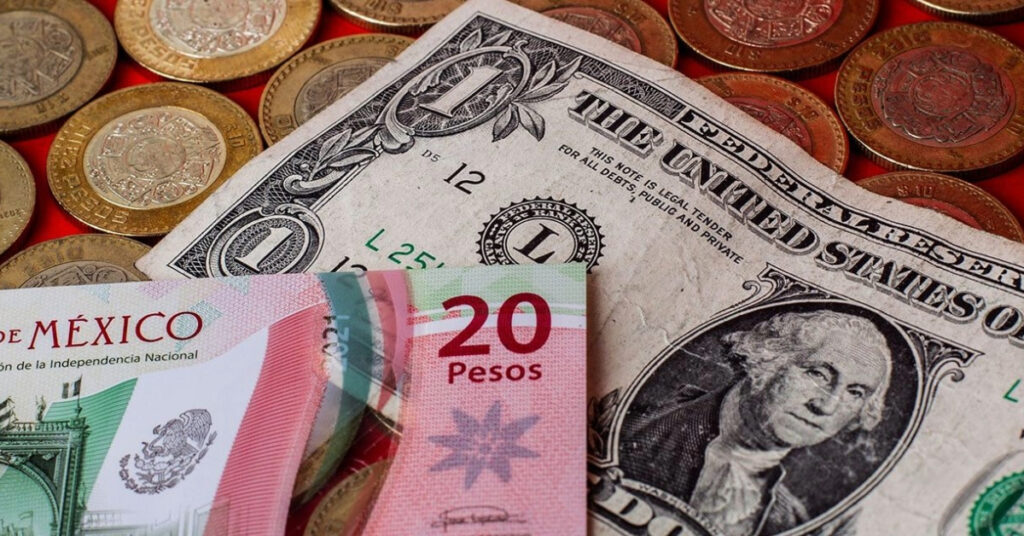The Mexican peso experienced a significant decline on Friday morning following the release of a U.S. employment report that heightened concerns about the economic stability of Mexico’s largest trading partner. The peso depreciated sharply, at times exceeding the 19-per-dollar mark, reflecting heightened market anxiety.
As of the latest data, the spot exchange rate stands at 18.9917 pesos per dollar. This represents a depreciation of 21.96 cents, or 1.17 percent, compared to Thursday’s closing rate of 18.7721, according to the Bank of Mexico (Banxico). The local currency’s weakness highlights investor apprehensions about the health of the U.S. economy.
The U.S. dollar is currently trading within a broad range, fluctuating between a high of 19.2221 units and a low of 18.8508 units. Meanwhile, the Dollar Index (DXY) from the Intercontinental Exchange, which tracks the greenback against a basket of six major currencies, has fallen by 1.16% to 103.21 units.
Concerns Over U.S. Recession Grow
Investor concerns about a potential U.S. recession have intensified, driven by recent economic indicators that suggest a slowdown. The Bureau of Labor Statistics reported that nonfarm payrolls increased by only 114,000 in the previous month, significantly below the anticipated 175,000 by economists. Additionally, the unemployment rate rose to 4.3% from 4.1% in June.
“The most striking aspect of the report is the increase in the unemployment rate from 4.1% in June to 4.3% in July. This increase is particularly concerning as it could trigger the Sahm Rule, indicating the onset of a recession,” stated the Analysis division of Vector Casa de Bolsa in a note to clients.
The Sahm Rule is a key economic indicator used to detect the beginning of a recession in the United States. It is confirmed when the three-month moving average of the unemployment rate rises by 0.50% above its lowest level in the previous 12 months, playing a critical role in shaping economic policy.
Federal Reserve’s Role Under Scrutiny
Traders are increasingly concerned that the Federal Reserve’s aggressive interest rate policy may have inadvertently slowed the economy more than intended in its battle against inflation. There is growing speculation that a potential interest rate cut in September may be too late to mitigate economic damage.
The Federal Reserve recently decided to keep interest rates unchanged at a range of 5.25% to 5.50%. However, Federal Reserve Chairman Jerome Powell indicated that a rate cut had been discussed during the Federal Open Market Committee meeting and could occur as early as September if economic conditions warrant it.
“Investor sentiment has deteriorated significantly in the short term due to emerging fears of a recession in the United States,” reported CIBanco, highlighting the prevailing market unease.
Broader Economic Implications
The jobs report follows a weak U.S. manufacturing report released on Thursday, which triggered widespread risk-off sentiment in global markets. Mexico, with its economy closely tied to the United States, is particularly vulnerable to fluctuations in U.S. economic performance.
The sharp decline in the peso underscores the interconnectedness of the two economies and the potential ramifications of a U.S. recession on Mexico’s economic outlook. As investors grapple with the possibility of a downturn in the United States, the Mexican government and businesses may need to brace for potential economic headwinds.
The coming weeks will be critical in determining the trajectory of both the U.S. and Mexican economies as policymakers and investors closely monitor economic indicators and central bank actions. The peso’s performance will likely remain a barometer of market sentiment, reflecting the broader economic challenges facing both nations.
